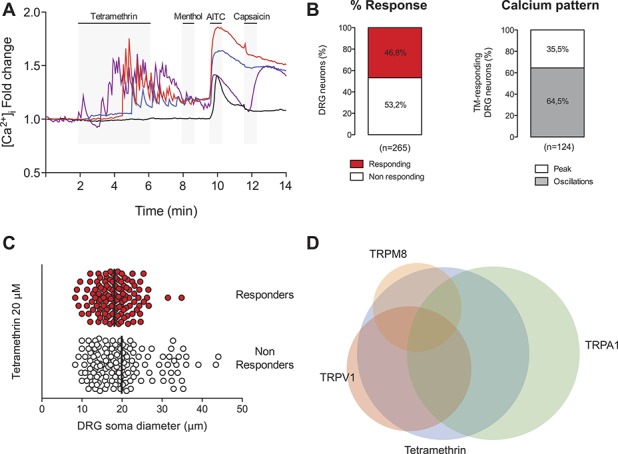Figure 1.

Tetramethrin (TM) excites a subset of sensory neurons with characteristics of nociceptors. (A) Wild-type mouse DRG sensory neurons were exposed to TM (20 μM), the TRPM8 agonist menthol (100 μM), the TRPA1 agonist allyl isothiocyanate (AITC, 100 μM), and the TRPV1 agonist capsaicin (1 μM), and intracellular calcium was measured by Fura-2 ratiometric imaging. A series of representative traces are shown. Tetramethrin induced a characteristic oscillatory calcium pattern in a large percentage of cells (red, purple, and blue traces). Calcium responses show that some cells are only activated by TM, whereas others respond also to agonists of TRPA1 or TRPV1. A non-TM responsive neuron that responds to AITC is shown in the black trace. (B) Left: quantification of the percentage of neurons responding to TM. Right: percentage of TM-responding cells showing an oscillatory calcium pattern or responding with a single calcium peak. (C) Soma diameter distribution of DRG neurons sensitive and insensitive to TM. Black bars show the mean soma value in each group. (D) Venn diagram showing the relative size and overlap between the population of TM-activated neurons and those activated by menthol, AITC, or capsaicin. DRG, dorsal root ganglion.
